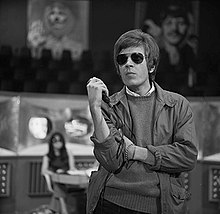
The Dollars Trilogy, also known as the Man with No Name Trilogy, is an Italian film series consisting of three Spaghetti Western films directed by Sergio Leone. The films are titled A Fistful of Dollars (1964), For a Few Dollars More (1965) and The Good, the Bad and the Ugly (1966). Their English versions were distributed by United Artists, while the Italian ones were distributed by Unidis and PEA.
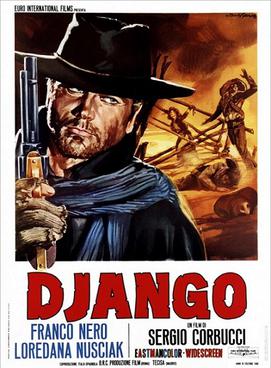
Django is a 1966 spaghetti Western film directed and co-written by Sergio Corbucci, starring Franco Nero as the title character alongside Loredana Nusciak, José Bódalo, Ángel Álvarez and Eduardo Fajardo. The film follows a Union soldier-turned-drifter and his companion, a mixed-race prostitute, who become embroiled in a bitter, destructive feud between a gang of Confederate Red Shirts and a band of Mexican revolutionaries. Intended to capitalize on and rival the success of Sergio Leone's A Fistful of Dollars, Corbucci's film is, like Leone's, considered to be a loose, unofficial adaptation of Akira Kurosawa's Yojimbo.
Western lifestyle or cowboy culture is the lifestyle, or behaviorisms, of, and resulting from the influence of, the attitudes, ethics and history of the American western cowboy. In the present day these influences affect this sector of the population's choice of recreation, western wear, partaking of western cuisine and Southwestern cuisine, and enjoyment of the western genre and western music.

Der Schuh des Manitu is a 2001 German Western parody film. Directed by Michael Herbig, it is a film adaptation of the Winnetou sketches from his ProSieben television show Bullyparade. With earnings of about 65 million Euro and 11.7 million visitors in cinemas, it is one of the most successful German movies after the Second World War.

The Big Gundown is a 1967 spaghetti Western film directed by Sergio Sollima, and starring Lee Van Cleef and Tomas Milian.

Face to Face is a 1967 Italian/Spanish international co-production Spaghetti Western film co-written and directed by Sergio Sollima and produced by Alberto Grimaldi. The film stars Gian Maria Volonté, Tomas Milian and William Berger, and features a musical score by Ennio Morricone. It is the second of Sollima's three Westerns, following The Big Gundown and predating Run, Man, Run, a sequel to the former. Milian stars in a lead role in all three films.

Robert Hossein was a French film actor, director, and writer. He directed the 1982 adaptation of Les Misérables and appeared in Vice and Virtue, Le Casse, Les Uns et les Autres and Venus Beauty Institute. His other roles include Michèle Mercier's husband in the Angélique series, a gunfighter in the Spaghetti Western Cemetery Without Crosses, and a Catholic priest who falls in love with Claude Jade and becomes a communist in Forbidden Priests.

Benito Stefanelli was an Italian film actor, stuntman and weapons master who made over 60 appearances in film between 1955 and 1991.

Gunfighters of Casa Grande is a 1964 Eurowestern film, co-produced by American and Spanish producers. Based on a story by Borden and Patricia Chase, it was later developed into a screenplay with the assistance of screenwriter Clark Reynolds and directed by Roy Rowland, the last film he made for Metro-Goldwyn-Mayer.

Silver Saddle is a 1978 spaghetti Western. It is the third and final western directed by Lucio Fulci and one of the last spaghetti Westerns to be produced by a European studio. The film was based on an original story written by screenwriter Adriano Bolzoni and directed by Fulci for the Italian studio Rizzoli Film Productions.
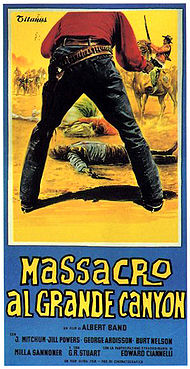
Grand Canyon Massacre is a 1964 Italian Spaghetti Western filmed in Croatia starring James Mitchum, Milla Sannoner, and George Ardisson. It was directed by Sergio Corbucci and produced by Albert Band. The film's theme song was performed by Rod Dana. The film has nothing to do with the Grand Canyon.

Five Thousand Dollars on One Ace is a 1964 Spanish Spaghetti Western film directed by Alfonso Balcázar, scored by Angelo Francesco Lavagnino and Don Powell, and starring Robert Woods, Fernando Sancho and Helmut Schmid.
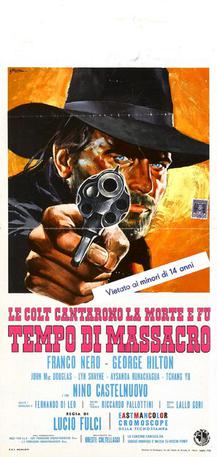
Massacre Time is a 1966 Italian Spaghetti Western film starring Franco Nero and George Hilton.

Johnny Hamlet (Italian: Quella sporca storia nel West, lit. 'That Dirty Story in the West' is a 1968 Italian film directed by Enzo G. Castellari. The film is a Spaghetti Western version of William Shakespeare's tragedy Hamlet.
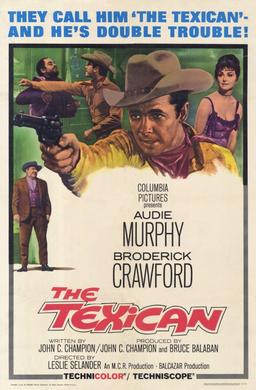
The Texican is a 1966 American Techniscope Western film produced and written by John C. Champion and directed by Lesley Selander. It is a paella western remake of their 1948 film Panhandle adapted for the persona of Audie Murphy that featured Broderick Crawford as the heavy. The film was re-titled Ringo il Texano in Italy to coincide with the popularity of the Ringo Spaghetti Western film series.
Guido Lollobrigida (1927–2013) was an Italian actor and race car driver, usually credited in movies as Lee Barton or Lee Burton. He was a cousin of actress Gina Lollobrigida.
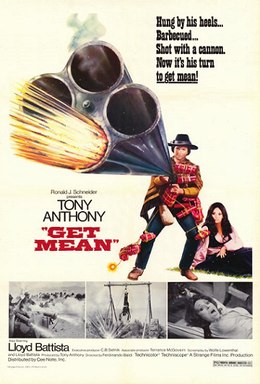
Get Mean, also known as Beat a Dead Horse, Vengeance of the Barbarians and The Stranger Gets Mean, is a 1975 Italian-American Spaghetti Western film directed by Ferdinando Baldi and starring Tony Anthony, Lloyd Battista, Raf Baldassarre, Diana Lorys and Mirta Miller. It is the final sequel to A Stranger in Town, with Anthony reprising the role of "The Stranger."

Scooby-Doo! Shaggy's Showdown is a 2017 direct-to-DVD animated western comedy mystery film, and the twenty-eighth entry in the direct-to-video series of Scooby-Doo films. It was released digitally on January 31, 2017, and on DVD on February 14, 2017.

Bison Film Company, also known as 101 Bison Film Company, is an American film studio established in 1909 and disestablished in 1917.

